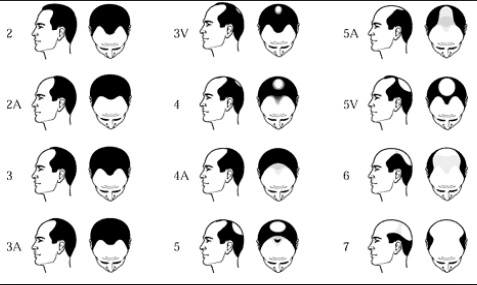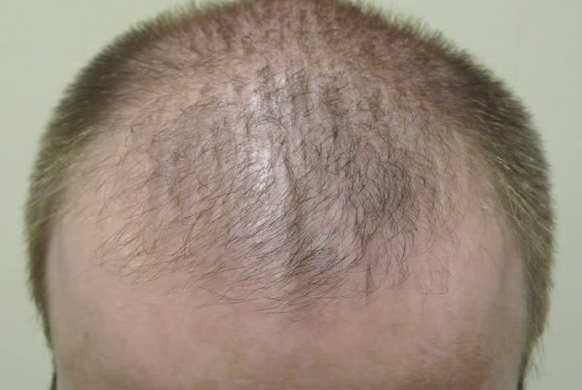Different factors contribute to hair loss, which distinctly affect men and women. Men tend to lose hair typically based solely on genetics. Women typically experience temporary hair loss due to psychological factors and permanently due to aging and hormonal imbalance.
The most common factor in hair loss for men and women is androgenic alopecia, or pattern baldness. This genetic condition makes recipients more sensitive to the hormone dihydrotestosterone (DHT), which miniaturizes follicles. Those with genetically weak androgen receptors thus suffer hair loss.

Hair Loss Differences Between Men and Women
Men prone to hair thinning and baldness experience it at a much younger age than women and at a higher percentage. Nearly 40 million men in the U.S. suffer from some degree of hair loss, according to the American Health Journal.
Pattern baldness is characterized by a well-defined pattern in men. Hair loss begins above both temples, followed by a receding hairline and crown loss. For those men who experience baldness, 95 percent of them have pattern baldness as the cause. Two-thirds of men will suffer from it by the age of 35, 85 percent by the age of 50. Additionally, 25 percent of these men will experience hair loss from pattern baldness by the age of 21.
Pattern baldness is the also the leading cause of hair loss in women. The female variant causes hair thinning over the entire head rather than baldness or a receding hairline. Approximately 21 million women in the U.S. experience a form of hair loss, according to the American Health Journal. It affects 50 percent of women over the age of 40.
Variables Affecting Hair Loss : Triggers For Hair Thinning and Loss
When hair loss is not due to pattern baldness, the causes can range from poor circulation to lupus. Non-genetic factors also increase hair loss in women more than men, whether temporary or permanent.
Permanent:
- Trichotillomania
- Lupus
- Traction/scarring alopecia
- Alopecia areata, totalis, universalis
Temporary:
- Severe stress
- Pregnancy
- Sleep deprivation
- Illness
- Drug use
- Poor circulation
- Malnourishment
- Iron/folic acid deficiency
- Telogen effluvium
- Hormone imbalance
- Untreated hypothyroidism
Treatment regimes and surgeries
Once an assessment is made for the cause of hair loss, treatments range from lifestyle adjustments and dietary changes to medications and surgery. It is best to first consult with a medical professional for substantial hair loss, namely pattern balding, with the following options for course of action:
- Rogaine (minoxidil)
- Propecia (finasteride)
- Hair transplant
Dr. Umar’s advanced method of follicular unit extraction (FUE), along with body to hair transplant (BHT), produces superior results and allows more patients to have full hair restoration. Contact his office for a consultation on hair replacement options.

